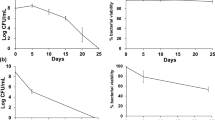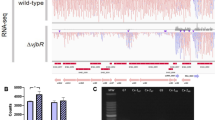Abstract
Two-component systems (TCSs) dictate many bacterial responses to environmental change via the activation of a membrane-embedded sensor kinase, which has molecular specificity for a cognate response regulator protein. However, although the majority of TCSs operate through seemingly strict cognate protein–protein interactions, there have been several reports of TCSs that violate this classical model of signal transduction. Our group has recently demonstrated that some of these cross-interacting TCSs function in a manner that imparts a fitness advantage to bacterial pathogens. In this study, we describe interconnectivity between the metabolite-sensing TCSs YpdA/YpdB and BtsS/BtsR in uropathogenic Escherichia coli (UPEC). The YpdA/YpdB and BtsS/BtsR TCSs have been previously reported to interact in K12 E. coli, where they alter the expression of putative transporter genes yhjX and yjiY, respectively. These target genes are both upregulated in UPEC during acute and chronic murine models of urinary tract infection, as well as in response to pyruvate and serine added to growth media in vitro. Here, we show that proper regulation of yhjX in UPEC requires the presence of all components from both of these TCSs. By utilizing plasmid-encoded luciferase reporters tracking the activity of the yhjX and yjiY promoters, we demonstrate that deletions in one TCS substantially alter transcriptional activity of the opposing system’s target gene. However, unlike in K12 E. coli, single gene deletions in the YpdA/YpdB system do not alter yjiY gene expression in UPEC, suggesting that niche and lifestyle-specific pressures may be selecting for differential cross-regulation of TCSs in pathogenic and non-pathogenic E. coli.






Similar content being viewed by others
References
Alteri CJ, Smith SN, Mobley HL (2009) Fitness of Escherichia coli during urinary tract infection requires gluconeogenesis and the TCA cycle. PLoS Pathog 5:e1000448
Andersson DI, Hughes D (2011) Persistence of antibiotic resistance in bacterial populations. FEMS Microbiol Rev 35:901–911
Appleby JL, Parkinson JS, Bourret RB (1996) Signal transduction via the multi-step phosphorelay: not necessarily a road less traveled. Cell 86:845–848
Barrett JF, Hoch JA (1998) Two-component signal transduction as a target for microbial anti-infective therapy. Antimicrob Agents Chemother 42:1529–1536
Behr S, Fried L, Jung K (2014) Identification of a novel nutrient-sensing histidine kinase/response regulator network in Escherichia coli. J Bacteriol 196:2023–2029
Behr S, Kristoficova I, Witting M, Breland EJ, Eberly AR, Sachs C, Schmitt-Kopplin P, Hadjifrangiskou M, Jung K (2017) Identification of a high-affinity pyruvate receptor in Escherichia coli. Sci Rep 7:1388
Bhate MP, Molnar KS, Goulian M, DeGrado WF (2015). Signal transduction in histidine kinases: insights from new structures. Structure 23:981–994
Breland EJ, Zhang EW, Bermudez T, Martinez CR III, Hadjifrangiskou M (2017) The histidine residue of QseC is required for canonical signaling between QseB and PmrB in uropathogenic Escherichia coli. J Bacteriol 199(18):e00060–17. https://doi.org/10.1128/JB.00060-17
Buelow DR, Raivio TL (2010) Three (and more) component regulatory systems—auxiliary regulators of bacterial histidine kinases. Mol Microbiol 75:547–566
Capra EJ, Laub MT (2012) Evolution of two-component signal transduction systems. Annu Rev Microbiol 66:325–347
Casino P, Rubio V, Marina A (2010) The mechanism of signal transduction by two-component systems. Curr Opin Struct Biol 20:763–771
Conover MS, Hadjifrangiskou M, Palermo JJ, Hibbing ME, Dodson KW, Hultgren SJ (2016) Metabolic requirements of Escherichia coli in intracellular bacterial communities during urinary tract infection pathogenesis. MBio 7:e00104–e00116
Croxen MA, Finlay BB (2010) Molecular mechanisms of Escherichia coli pathogenicity. Nat Rev Microbiol 8:26–38
Davies J, Davies D (2010) Origins and evolution of antibiotic resistance. Microbiol Mol Biol Rev 74:417–433
Eberly AR, Floyd KA, Beebout CJ, Colling SJ, Fitzgerald MJ, Stratton CW, Schmitz JE, Hadjifrangiskou M (2017) Biofilm formation by uropathogenic Escherichia coli Is favored under oxygen conditions that mimic the bladder environment. Int J Mol Sci 18(10). https://doi.org/10.3390/ijms18102077
Floyd KA, Moore JL, Eberly AR, Good JA, Shaffer CL, Zaver H, Almqvist F, Skaar EP, Caprioli RM, Hadjifrangiskou M (2015) Adhesive fiber stratification in uropathogenic Escherichia coli biofilms unveils oxygen-mediated control of type 1 pili. PLoS Pathog 11:e1004697
Freeman ZN, Dorus S, Waterfield NR (2013) The KdpD/KdpE two-component system: integrating K+ homeostasis and virulence. PLoS Pathog 9:e1003201
Fried L, Behr S, Jung K (2013) Identification of a target gene and activating stimulus for the YpdA/YpdB histidine kinase/response regulator system in Escherichia coli. J Bacteriol 195:807–815
Gao R, Stock AM (2009) Biological insights from structures of two-component proteins. Annu Rev Microbiol 63:133–154
Gebhardt MJ, Shuman HA (2017) GigA and GigB are master regulators of antibiotic resistance, stress responses, and virulence in Acinetobacter baumannii. J Bacteriol 199(10):e00066–17. https://doi.org/10.1128/JB.00066-17
Gillings MR, Paulsen IT, Tetu SG (2017) Genomics and the evolution of antibiotic resistance. Ann NY Acad Sci 1388:92–107
Gotoh Y, Eguchi Y, Watanabe T, Okamoto S, Doi A, Utsumi R (2010) Two-component signal transduction as potential drug targets in pathogenic bacteria. Curr Opin Microbiol 13:232–239
Guckes KR, Breland EJ, Zhang EW, Hanks SC, Gill NK, Algood HM, Schmitz JE, Stratton CW, Hadjifrangiskou M (2017) Signaling by two-component system noncognate partners promotes intrinsic tolerance to polymyxin B in uropathogenic Escherichia coli. Sci Signal 10(461):eaag1775. https://doi.org/10.1126/scisignal.aag1775
Guckes KR, Kostakioti M, Breland EJ, Gu AP, Shaffer CL, Martinez CR, Hultgren SJ, Hadjifrangiskou M (2013) Strong cross-system interactions drive the activation of the QseB response regulator in the absence of its cognate sensor. Proc Natl Acad Sci USA 110:16592–16597
Hadjifrangiskou M, Gu AP, Pinkner JS, Kostakioti M, Zhang EW, Greene SE, Hultgren SJ (2012). Transposon mutagenesis identifies uropathogenic Escherichia coli biofilm factors. J Bacteriol 194:6195–6205
Hadjifrangiskou M, Kostakioti M, Chen SL, Henderson JP, Greene SE, Hultgren SJ (2011) A central metabolic circuit controlled by QseC in pathogenic Escherichia coli. Mol Microbiol 80:1516–1529
Jung K, Fried L, Behr S, Heermann R (2012) Histidine kinases and response regulators in networks. Curr Opin Microbiol 15:118–124
Kellogg SL, Little JL, Hoff JS, Kristich CJ (2017) Requirement of the CroRS two-component system for resistance to cell wall-targeting antimicrobials in Enterococcus faecium. Antimicrob Agents Chemother 61(5):e02461–16. https://doi.org/10.1128/AAC.02461-16
Kostakioti M, Hadjifrangiskou M, Pinkner JS, Hultgren SJ (2009) QseC-mediated dephosphorylation of QseB is required for expression of genes associated with virulence in uropathogenic Escherichia coli. Mol Microbiol 73:1020–1031
Kraxenberger T, Fried L, Behr S, Jung K (2012) First insights into the unexplored two-component system YehU/YehT in Escherichia coli. J Bacteriol 194:4272–4284
Laub MT, Goulian M (2007) Specificity in two-component signal transduction pathways. Annu Rev Genet 41:121–145
Macfarlane EL, Kwasnicka A, Hancock RE (2000). Role of Pseudomonas aeruginosa PhoP-phoQ in resistance to antimicrobial cationic peptides and aminoglycosides. Microbiology 146(Pt 10):2543–2554
Macielag MJ, Goldschmidt R (2000) Inhibitors of bacterial two-component signalling systems. Expert Opin Investig Drugs 9:2351–2369
Mitrophanov AY, Groisman EA (2008) Signal integration in bacterial two-component regulatory systems. Genes Dev 22:2601–2611
Mulvey MA, Schilling JD, Hultgren SJ (2001) Establishment of a persistent Escherichia coli reservoir during the acute phase of a bladder infection. Infect Immun 69:4572–4579
Murphy KC, Campellone KG (2003) Lambda Red-mediated recombinogenic engineering of enterohemorrhagic and enteropathogenic E. coli. BMC Mol Biol 4:11
Ninfa AJ, Magasanik B (1986) Covalent modification of the glnG product, NRI, by the glnL product, NRII, regulates the transcription of the glnALG operon in Escherichia coli. Proc Natl Acad Sci USA 83:5909–5913
Nixon BT, Ronson CW, Ausubel FM (1986) Two-component regulatory systems responsive to environmental stimuli share strongly conserved domains with the nitrogen assimilation regulatory genes ntrB and ntrC. Proc Natl Acad Sci USA 83:7850–7854
Okada A, Igarashi M, Okajima T, Kinoshita N, Umekita M, Sawa R, Inoue K, Watanabe T, Doi A, Martin A, Quinn J, Nishimura Y, Utsumi R (2010) Walkmycin B targets WalK (YycG), a histidine kinase essential for bacterial cell growth. J Antibiot 63:89–94
Olivera BC, Ugalde E, Martínez-Antonio A (2010) Regulatory dynamics of standard two-component systems in bacteria. J Theor Biol 264:560–569
Perry JA, Westman EL, Wright GD (2014) The antibiotic resistome: what’s new? Curr Opin Microbiol 21:45–50
Podgornaia AI, Laub MT (2013) Determinants of specificity in two-component signal transduction. Curr Opin Microbiol 16:156–162
Robinson VL, Buckler DR, Stock AM (2000) A tale of two components: a novel kinase and a regulatory switch. Nat Struct Biol 7:626–633
Salazar ME, Laub MT (2015) Temporal and evolutionary dynamics of two-component signaling pathways. Curr Opin Microbiol 24:7–14
Schreiber M, Res I, Matter A (2009) Protein kinases as antibacterial targets. Curr Opin Cell Biol 21:325–330
Shaffer CL, Zhang EW, Dudley AG, Dixon BR, Guckes KR, Breland EJ, Floyd KA, Casella DP, Algood HM, Clayton DB, Hadjifrangiskou M (2017) Purine biosynthesis metabolically constrains intracellular survival of uropathogenic Escherichia coli. Infect Immun 85(1):e00471–16. https://doi.org/10.1128/IAI.00471-16
Skerker JM, Prasol MS, Perchuk BS, Biondi EG, Laub MT (2005) Two-component signal transduction pathways regulating growth and cell cycle progression in a bacterium: a system-level analysis. PLoS Biol 3:e334
Tipton KA, Rather PN (2016) An ompR/envZ two-component system ortholog regulates phase variation, osmotic tolerance, motility, and virulence in Acinetobacter baumannii strain AB5075. J Bacteriol. https://doi.org/10.1128/JB.00705-16
Tschauner K, Hörnschemeyer P, Müller VS, Hunke S (2014) Dynamic interaction between the CpxA sensor kinase and the periplasmic accessory protein CpxP mediates signal recognition in E. coli. PLoS One 9:e107383
Urano H, Yoshida M, Ogawa A, Yamamoto K, Ishihama A, Ogasawara H (2017) Cross-regulation between two common ancestral response regulators, HprR and CusR, in Escherichia coli. Microbiology 163:243–252
Wei CF, Tsai YH, Tsai SH, Lin CS, Chang CJ, Lu CC, Huang HC, Lai HC (2017) Cross-talk between bacterial two-component systems drives stepwise regulation of flagellar biosynthesis in swarming development. Biochem Biophys Res Commun 489:70–75
Acknowledgements
The authors would like to thank the members of the Hadjifrangiskou laboratory for critical review of the manuscript. B.D.S. was supported by the NIH GM07628 T32 training grant. M.N.H. was supported by NIH 5T32GM008554-22 and NIH 2R25GM062459-14 training programs. Financial support for this work was provided by the NIDDK Diabetic Complications Consortium (DiaComp, http://www.diacomp.org), Grant DK076169.
Author information
Authors and Affiliations
Contributions
BDS, ARE, MNH, HDG, SB, KJ, MH: conceived and designed experiments. BDS, ARE, MNH, EZ, HDG, MH: performed the experiments. KJ, SB: provided technical advice and edited the manuscript. BDS, MH: analyzed the data. BDS, ARE, MNH, MH: wrote and edited the manuscript.
Corresponding author
Ethics declarations
Conflict of interest
The authors declare no conflict of interest.
Electronic supplementary material
Below is the link to the electronic supplementary material.
Rights and permissions
About this article
Cite this article
Steiner, B.D., Eberly, A.R., Hurst, M.N. et al. Evidence of Cross-Regulation in Two Closely Related Pyruvate-Sensing Systems in Uropathogenic Escherichia coli. J Membrane Biol 251, 65–74 (2018). https://doi.org/10.1007/s00232-018-0014-2
Received:
Accepted:
Published:
Issue Date:
DOI: https://doi.org/10.1007/s00232-018-0014-2




